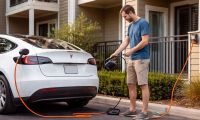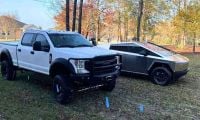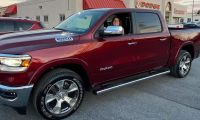As previously announced by the company, Tesla Motors confirmed on Wednesday that they have reached profitability for the first time in the company's history. This comes from having exceeded delivery targets in Q1 2013, improved the gross margin, improved execution throughout the company, and racking up record sales for the quarter.
The company is a start-up manufacturer of electric cars, and began selling its second car, the Tesla Model S, last summer. They have always run steep losses thanks to large R&D expenses and relatively low sales. The Roadster accounted for about 2,500 sales in total. With the Model S, however, this basic equation about the company is changing, and with a projected sales rate of 20,000 Model S's a year the company expects to maintain itself at a profitable level. Last summer, CEO Elon Musk claimed it would require sales of just 8,000 Model S's a year for the company to be cash-flow-break-even.
In a letter to shareholders the company reported having revenues of $561 million for Q1 2013, up from $306 million in Q4 2012 and up from $30 million in Q1 2012. That's an 84% jump just from last quarter, and nearly 20x jump from the same quarter last year. The huge increase in Tesla's revenue is directly attributable to having the Model S in production, and the strong sales of that car. Other revenue comes from selling electric drive trains and battery packs to Toyota for the GenII RAV4-EV, the completion of various deliverables under the Mercedes Benz B-Class EV program, and the Zero Emission Vehicles (ZEV) credits Tesla sells to other automakers.
The key factoid is that the company consistently produced 400 or more Model S's per week, making over 5,000 in Q1. Of those, they sold 4,900 vehicles exceeding the initial Q1 guidance of 4,500 sales by a wide margin. In addition, manufacturing processes stabilized, they were able to achieve parts cost reductions and supply chain improvements. Improved inventory control management contributed over $30 million in cash and reduced logistics costs. Most importantly to the workforce, they reduced the number of hours required to build a car by almost 40% from December to March.
The ZEV credits are earned by Tesla for Model S sales in California. Tesla sells those credits to other automakers who aren't as serious about their own electric car programs. In Q1 2013 those credits brought in $68 million of revenue, or 12% of the total. During 2013 the company expects ZEV credit revenue to fall off, partly because of increasing sales outside California, and partly because the company is saturating the market for ZEV credits.
Worldwide they're receiving orders for new Model S's at a rate greater than 20,000 cars a year. The factory is currently rated to produce 20,000 cars a year, so one wonders whether there will be an expansion to accommodate the demand.
For Q2, Tesla expects to build about 5,000 Model S's. However some of those cars will be in transit to Europe for deliveries that are beginning in Q3 2013. Sales guidance for Q2 is 4,500 Model S's all of which will be in North America. They are raising the sales target for all of 2013 to 21,000 Model S's.











